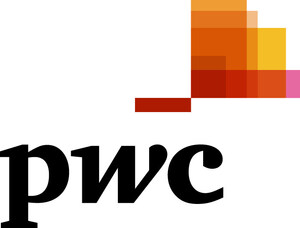US Private Companies Pursue Growth Abroad; Emerging Markets Offer Brightest Prospects
PwC's Private Company Trendsetter Barometer tracks the business issues and standard industry practices of leading privately held US businesses. It incorporates the views of 236 CEOs/CFOs: 128 from companies in the product sector and 108 in the service sector, averaging $278 million in enterprise revenue/sales and including large, $300 million-plus private companies.
NEW YORK, Sept. 13, 2011 /PRNewswire/ -- The majority (51%) of US private companies surveyed for PwC US' Private Company Trendsetter Barometer plan to do business abroad in the next one to two years, and 48% already have an international presence. The overwhelming reason for their foreign expansion, according to the surveyed companies, is to broaden their customer base (80%), whereas just roughly one-quarter of respondents (24%) are in international markets to lower their cost base. Other reasons cited for going abroad include better serving global clients (43%), compensating for slow growth at home (33%), and being where competitors are (26%).
(Logo: http://photos.prnewswire.com/prnh/20100917/NY66894LOGO )
"Historically, companies expanded into international markets to lower their manufacturing and sourcing costs," says Ken Esch, a partner in PwC's Private Company Services practice. "The international expansion we're seeing now is well beyond cost arbitrage. It's about increasing sales and accessing new markets to grow the top line. To achieve those goals, many of our clients are looking abroad, compensating for weakened demand at home."
Canada, Western Europe, and Mexico are the top three international markets where private companies have a current or planned presence, as reported by 81%, 56%, and 53% of Trendsetter companies operating abroad, respectively. The BRIC countries (Brazil, Russia, India, and China) are a target for roughly half (51%) of internationally active private companies. Two-thirds (66%) of private businesses operating abroad are targeting other fast-growing markets such as Indonesia, South Korea, South Africa, Poland, and Turkey (Mexico is also included in this category of "other fast-growing" markets). Overall, three quarters (74%) of Trendsetter private companies with an international presence are setting their sights on emerging and fast-growing markets.
Consistent with their main reason for marketing abroad (expanding their customer base), US private companies are aiming to make international sales account for 18.7% of their total annual revenue over the next one to two years. Trendsetter executives also expect that during this timeframe, international sales growth will outpace growth from domestic sales -- anticipated at 14.8% and 11.6%, respectively. This gap in growth rates between international and domestic sales is especially pronounced among companies marketing in BRIC countries, where sales are expected to grow at nearly twice the rate as in the United States (18.0% vs. 9.7%). Similarly, private companies with a presence in other fast-growth markets expect 16.4% sales growth internationally, compared with 11.3% growth in domestic sales.
"While many private companies have made culturally familiar places such as Western Europe a first stop on the road to international expansion," remarks Esch, "the real growth lies farther afield. Companies willing to venture beyond their comfort zone, into emerging and other fast-growth markets, are deciding that the challenges in those markets, while sometimes considerable, are commensurate with the potential rewards."
Challenges to International Expansion
The top challenges to operating abroad, as cited by Trendsetter executives, are finding the right business partners (68%), establishing adequate cross-cultural management (63%), and finding sufficient local talent (56%). These challenges were cited by a notably higher percentage of companies operating in the BRICs (85%, 79%, and 69%, respectively). Other challenges cited by internationally active companies include security risks (49%), local regulatory requirements (48%), and corruption (46%).
Some of these challenges are also cited as disincentives by Trendsetter companies that have no current or planned international involvement (49%). The primary reason these companies are not pursuing international expansion is that their products/services are tailored to the US market (42%), according to the survey respondents. Another 15% cited difficulty finding the right business partners.
"Navigating challenges is part of the investment companies make when going abroad," says Esch. "The biggest hurdle to clear is getting into the first market and overcoming the risks there. The investment and barriers go down with each subsequent market. One way to make your entry into a new market smoother is to carefully select business partners, suppliers, and consultants who can share their experiences in that market, along with best practices for overcoming the challenges there."
Table 1: Challenges to Operating Internationally |
|||||
International Market Segments |
|||||
Total |
BRIC Countries |
Other Fast- Growth Countries |
All Others |
||
Finding the right business partners |
68% |
85% |
76% |
42% |
|
Cross-cultural management |
63% |
79% |
68% |
42% |
|
Finding adequate local talent |
56% |
69% |
65% |
36% |
|
Security risks |
49% |
59% |
53% |
29% |
|
Local regulatory requirements |
48% |
54% |
49% |
45% |
|
Corruption |
46% |
54% |
54% |
19% |
|
Local tax policy |
42% |
49% |
44% |
36% |
|
Poor infrastructure |
39% |
49% |
43% |
23% |
|
Distribution/supply-chain issues |
38% |
48% |
48% |
16% |
|
Contract disputes |
36% |
41% |
35% |
26% |
|
Protecting intellectual property |
32% |
41% |
37% |
16% |
|
Preferred Entry Methods
The preferred method of entry into BRIC countries varies by market. The most-cited methods were sales rep offices (20%), strategic alliances (18%), wholly owned startups (15%) and joint ventures (12%). In Russia and China, sales rep offices are the preferred method (38% and 34%, respectively), while strategic alliances are most used in Russia (33%) and India (27%).
"Our advice to companies entering new markets is to start with a low-cost investment like a sales office, which allows them to test the market for their products and services and then determine whether the market is viable over the long term," says Esch. "Strategic alliances and joint ventures are good alternatives, offering companies the security of a partner that has hard assets and logistics experience in the market. With the right entry strategy, the barriers to international expansion are surmountable and the opportunities for long-term growth significant."
Moving beyond tomorrow's uncertainty and growing your business matters to you, and to us. Experience what it is like to work with professionals dedicated to serving private companies and their owners. Working with you on both day-to-day and more-complex issues such as compliance, controls, cash flow, expansion, succession, and personal financial matters -- this is PwC's Private Company Services.
You talk, we listen and share insight. We are proud to serve as advisors to more than 60% of America's Largest Private Companies,(1) collaborating to help you achieve long-term success.
Experience the difference. Visit us online at pwc.com/us/pcs, email us at [email protected], or call us at 800-844-4PCS to start the conversation.
(1) 2010 Forbes America's Largest Private Companies List
About the PwC Network
PwC firms provide industry-focused assurance, tax and advisory services to enhance value for their clients. More than 161,000 people in 154 countries in firms across the PwC network share their thinking, experience and solutions to develop fresh perspectives and practical advice. See www.pwc.com for more information.
© 2011 PwC. All rights reserved. "PwC" and "PwC US" refer to PricewaterhouseCoopers LLP, a Delaware limited liability partnership, which is a member firm of PricewaterhouseCoopers International Limited, each member firm of which is a separate and independent legal entity.
For more information about Barometer surveys, as well as recent economic-trend data and information about topical issues, please visit our website: www.barometersurveys.com
SOURCE PwC
WANT YOUR COMPANY'S NEWS FEATURED ON PRNEWSWIRE.COM?
Newsrooms &
Influencers
Digital Media
Outlets
Journalists
Opted In





Share this article